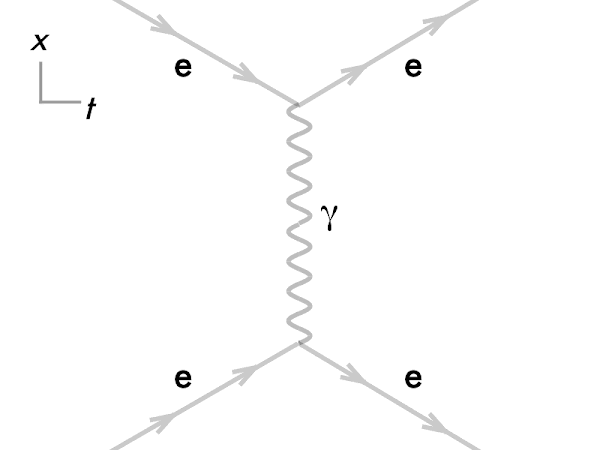Cuesta College, San Luis Obispo, CA
Students have a weekly online reading assignment (hosted by SurveyMonkey.com), where they answer questions based on reading their textbook, material covered in previous lectures, opinion questions, and/or asking (anonymous) questions or making (anonymous) comments. Full credit is given for completing the online reading assignment before next week's lecture, regardless if whether their answers are correct/incorrect. Selected results/questions/comments are addressed by the instructor at the start of the following lecture.
The following questions were asked on reading presentations Feynman diagrams (Phillip "Flip" Tanedo, Cornell University/USLHC Collaboration) and quantum electrodynamics (QED) (Christopher "Bot" Skilbeck, cronodon.com).

Ralph Leighton
symmetrymagazine.org/article/may-2014/saving-the-feynman-van
Selected/edited responses are given below.
Describe what you understand from the assigned textbook reading or presentation preview. Your description (2-3 sentences) should specifically demonstrate your level of understanding.
"Quantum electrodynamics describes how light and matter interact. It is the first theory where full agreement between quantum mechanics and special relativity is achieved."
"Interactions of charged particles can create imaginary particles and violate energy conservation, as long as it is within the energy-time uncertainty principle. Sometimes imaginary particles will 'become real' if real particles leave the electron."
"Repulsive force between electron pairs and positron pairs occur because of a virtual photon being emitted, which exist as momentum. Virtual particles can phase in and out of existence spontaneously according to the energy-time uncertainty principle. There are four fundamental forces in the universe: electromagnetic, strong, weak, and gravity. Nuclear force, the force mediating proton-neutron interactions, also originates from emission of virtual particles."
"How to draw a single Feynman diagram and that there is an electron than can absorb or emit a photon into a positron and it can go the other way. There are also incorrect ways to draw Feynman diagrams and I know that time has to travel from left to right."
"You absolutely have to read the diagram from left to right, and I can tell you what's happening in the simpler diagrams."
"I have a strong grasp of Feynman diagrams from the online presentation as well as the introduction during our lecture of the previous week. These diagrams are visual and conceptual which makes easier to get a grasp of."
"Honestly, not much."
"Not a single thing."
Describe what you found confusing from the assigned textbook reading or presentation preview. Your description (2-3 sentences) should specifically identify the concept(s) that you do not understand.
"I still have a hard time understanding how to draw a Feynman diagram. I still don't understand how to tell what is a virtual electron or photon."
"I'm not really sure how you tell the charge of the photon."
"I am a bit confused on how to determine the charge of some of the intermediate particles such as bosons."
"I find it confusing when the exchange particle is not drawn straight up and down, it makes me think it happens over time and is not an instant exchange."
"Everything."
"All of it! No really, I definitely do not get this."

negative. *** [3] zero. ************* [13] positive. **** [4] (Unsure/guessing/lost/help!) ** [2]

negative. ** [2] zero. ***** [5] positive. ********** [10] (Unsure/guessing/lost/help!) ***** [5]

negative. **** [4] zero. *** [3] positive. ******** [8] (Unsure/guessing/lost/help!) ******* [7]
Ask the instructor an anonymous question, or make a comment. Selected questions/comments may be discussed in class.
"One more week!"
"I <3 you P-dog. This year of physics has been great. Thank you so much."
"More explanation of gluons please!"
"Is it possible for me to ask this question from multiple parallel universes?"
"I am so so lost in this subject... lost as in like a dark post-apocalyptic place... so not a good lost."
"How do we know the virtual particles are there if we can't see them?"
"Please go over the more obscure particles, i.e. quarks, pions, etc."
"Interesting to see how this relates to the physical world!"
No comments:
Post a Comment